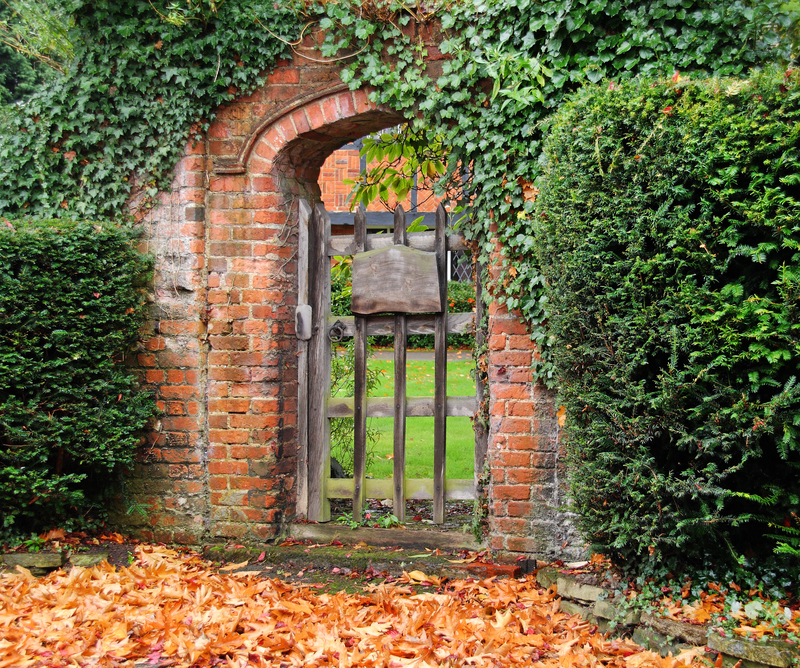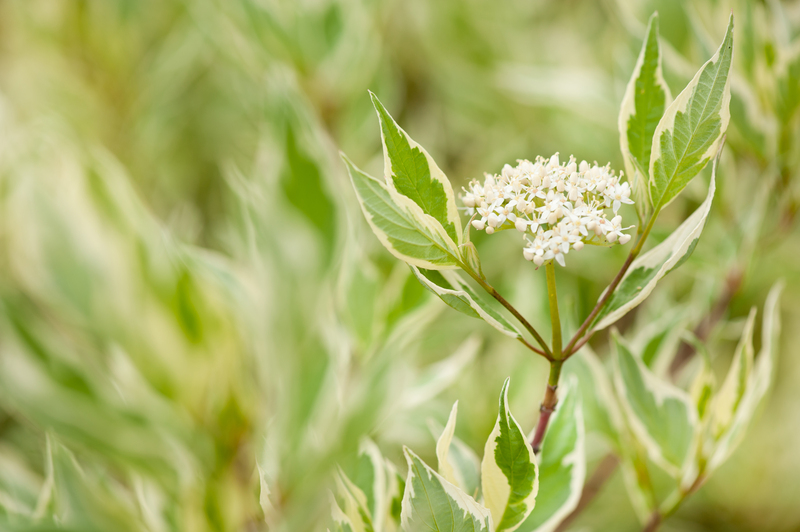Design a serene and flourishing herb garden oasis
Posted on 28/05/2025
Design a Serene and Flourishing Herb Garden Oasis
Creating a serene and flourishing herb garden oasis is one of the most rewarding ways to bring tranquility and beauty to your outdoor space. An herb garden not only enhances your landscape with lush greenery and soothing aromas but also offers culinary and healing benefits. This comprehensive guide will walk you through the essential steps, clever design strategies, and helpful care tips needed to cultivate your own herbal sanctuary.

Benefits of Having an Herb Garden Oasis
- Health and Wellness: Many herbs contain medicinal properties that promote relaxation, aid digestion, and boost immunity.
- Culinary Delights: Fresh herbs elevate home-cooked meals with vibrant flavors and nutrition.
- Aesthetic Appeal: Herb gardens add color, texture, and fragrance to any space, creating a tranquil retreat.
- Eco-Friendly Choice: Attract pollinators and beneficial insects while reducing your carbon footprint.
- Stress Reduction: Spending time in a verdant, peaceful garden helps relieve stress and cultivates mindfulness.
Choosing the Right Location for Your Herbal Sanctuary
For a flourishing herb garden oasis, location is key. Consider these factors:
- Sunlight: Most herbs thrive with at least six hours of direct sunlight. Choose a south-facing or east-facing plot for optimal growth.
- Soil Quality: Well-draining, loamy soil with organic matter is vital. Avoid waterlogged or heavy clay areas.
- Accessibility: Position your garden near the kitchen for quick harvesting and regular care.
- Shelter: A spot protected from harsh winds ensures delicate herbs remain robust and upright.
Design Principles for a Calm and Glorious Herb Retreat
- Symmetry and Flow: Use winding paths and curved garden beds to create a soft, natural flow.
- Layering: Arrange taller herbs like rosemary and lavender at the back, medium herbs in the center, and low growers like thyme along the edges.
- Color and Texture: Combine silvery leaves, deep greens, and blooms like chive flowers for visual delight.
- Sound and Water: Incorporate a humming-bird attracting fountain or a small pond for soothing sounds.
Planning Your Serene Herb Garden Oasis Layout
Design a garden that encourages relaxation and utility. Here are a few layout ideas:
- Herb Spiral: Create a three-dimensional spiral mound using rocks or bricks. This maximizes space and sun exposure for different herbs.
- Raised Beds: Perfect for accessibility and soil control. Use untreated wood or stone for natural aesthetics.
- Kitchen-Close Container Garden: For smaller spaces, grow herbs in large pots near the kitchen door or on the patio.
- Formal Knot Garden: Inspired by Renaissance gardens, use boxwood hedges and geometric patterns.
- Wildlife Border: Plant nectar-rich herbs like borage or fennel to attract bees, butterflies, and birds.
Choosing the Best Herbs for a Flourishing Oasis
A thriving herb oasis includes a blend of annual, biennial, and perennial plants. Here are some top choices for different uses:
Culinary Herbs
- Basil: Sweet, spicy leaves amplify pasta, salads, and pesto.
- Thyme: Earthy, aromatic, and heat-tolerant, ideal for soups and roasted dishes.
- Parsley: Curly or flat-leaf varieties suit garnishes and tabbouleh.
- Mint: Refreshes drinks and desserts, but keep it in pots to prevent spreading.
- Cilantro: Essential for salsas, curries, and fresh salads.
Medicinal and Aromatic Herbs
- Lavender: Calming scent, perfect for teas and sachets.
- Chamomile: Dainty, apple-scented blooms make soothing teas.
- Lemon Balm: Uplifting citrus aroma for teas and tinctures.
- Sage: Traditionally used for purifying rituals as well as cooking.
- Rosemary: Fragrant foliage for memory aid and savory dishes.
Companion and Beneficial Herbs
- Borage: Attracts pollinators and improves soil health.
- Chives: Repel pests and add mild onion flavor.
- Dill: Lures beneficial insects; great for pickling.
How to Prepare the Soil for Herb Garden Success
Healthy soil is the foundation of a flourishing herb garden oasis. To achieve this:
- Test Your Soil: Check pH and nutrient levels. Herbs prefer neutral to slightly alkaline soil (pH 6-7.5).
- Add Amendments: Mix in compost or well-rotted manure for fertility and drainage.
- Mulch: Use straw, bark chips, or cocoa hulls to conserve moisture and deter weeds.
Planting Your Serene Herb Garden
Follow these steps to ensure strong, vibrant plants:
- Timing: Plant annual herbs after the last frost, while perennials can be planted in early spring or fall.
- Spacing: Give each herb plenty of room for air flow (typically 1-2 feet apart).
- Watering: Water deeply but infrequently, allowing the soil to dry slightly between sessions.
- Grouping: Place thirsty herbs together and drought-tolerant varieties like sage and oregano in another group.
Design Accents to Enhance Your Herbal Oasis
- Pathways: Use natural materials such as flagstone, gravel, or wood chips to create inviting walkways.
- Garden Seating: Add a rustic bench, hammock, or swing to encourage relaxation.
- Art and Statuary: Include wind chimes, sculptures, or hand-painted signs for whimsy and charm.
- Containers and Raised Planters: Elevate herbs and create visual interest with attractive pots or troughs.
- Water Feature: Install a bird bath, bubbling fountain, or small pond for calming sounds.
Creating Zones Within Your Herb Garden Oasis
Consider dividing your herb garden into zones for varied experience:
- Culinary Zone: Place basil, rosemary, parsley, and chives near the kitchen for easy access.
- Sensory Zone: Group lavender, lemon balm, and mint for fragrance and touch.
- Relaxation & Meditation Zone: Include a seat surrounded by calming herbs like chamomile and sage.
- Wildlife & Pollinator Patch: Dedicate a sunny corner to bee- and butterfly-friendly herbs such as borage and oregano.
Caring for Your Serene and Flourishing Herb Garden Oasis
Watering
- Consistency: Water in the morning and avoid overhead watering to curb fungi.
- Moisture Check: Stick your finger 1 inch into the soil. If it's dry, it's time to water.
Fertilizing
- Minimal Feeding: Herbs don't need much fertilizer; overfeeding can reduce their flavor and aroma.
- Organic Options: Use compost tea, fish emulsion, or a slow-release organic fertilizer.
Pruning and Harvesting
- Regular Harvest: Pinch back herbs often to encourage bushy growth.
- Remove Flower Buds: Except for herbs like basil and lavender where flowers are used, nip blossom buds to keep leaves flavorful.
Pest and Disease Management
- Natural Predators: Encourage ladybugs and lacewings to control aphids.
- Neem Oil: Use as a safe, organic pesticide for spider mites and powdery mildew.
- Cleanliness: Clear away dead leaves and debris to reduce disease risk.
Encouraging Serenity and Mindfulness in Your Herbal Retreat
- Garden Therapy: Spend time tending your herbs to soothe the mind and spirit.
- Meditative Walkways: Walk barefoot along soft paths for grounding and peace.
- Evening Illumination: Place solar-powered lanterns or fairy lights for a magical nighttime atmosphere.
- Journaling: Keep a garden journal to track your plants and reflect on your experiences.
Year-Round Enjoyment of Your Herb Garden Oasis
- Winter Protection: Mulch perennial herbs to insulate roots and use cold frames if desired.
- Indoor Herbs: Pot up favorites like basil and chives to enjoy fresh herbs indoors through the cold months.
- Herb Preservation: Dry, freeze, or preserve your seasonal harvest in oils and vinegars for year-round use.
Sustainable Practices for a Flourishing Herbal Oasis
- Composting: Recycle garden waste and kitchen scraps into nutrient-rich compost for your herbs.
- Rainwater Harvesting: Collect rainwater to irrigate your garden and conserve resources.
- Natural Mulching: Replace synthetic weed barriers with straw, leaves, or wood chips.
- Pollinator-Friendly Choices: Avoid pesticides, and choose flowering herbs to attract bees and butterflies.
Creative Uses for Your Serene Herb Garden Harvest
- Culinary Creations: Prepare homemade pesto, infused olive oils, and herbal teas.
- Relaxation Rituals: Use lavender or chamomile sachets in pillows or bath soaks.
- Decor and Gifts: Craft herbal wreaths or potpourri for eco-friendly home accents and gifts.
- Natural Remedies: Brew herbal tinctures, salves, and balms with sage, calendula, or mint.

Frequently Asked Questions About Herb Garden Oases
What are the easiest herbs to grow for beginners?
{Basil, chives, mint, parsley, and oregano are great starter herbs due to their resilience and adaptability.}
How do I keep my herb garden flourishing through the seasons?
Regular watering, seasonal mulching, and consistent harvesting will keep most herb gardens healthy year-round. Consider growing some herbs in containers so you can move them indoors when temperatures drop.
Can I create a serene herb garden in a small space?
Absolutely! Vertical gardens, hanging baskets, and window boxes are ideal for growing a lush collection of herbs in compact environments such as balconies or patios.
How do I design a herb garden for both beauty and utility?
Layer herbs by height, mix colors and textures, and include winding paths or symmetry for visual appeal. Ensure your most-used culinary herbs are easily accessible.
Conclusion: Cultivate Peace and Plenty in Your Own Herb Garden Oasis
Designing a serene and flourishing herb garden oasis is more than a landscaping choice--it's a lifestyle. By combining thoughtful design, proven gardening practices, and mindful relaxation spaces, you'll foster an environment that nourishes both body and soul. No matter your garden's size, with a little planning and creativity, your retreat can thrive year after year, becoming a cherished haven for well-being, inspiration, and enjoyment.
Begin your herb gardening journey today and watch as your outdoor space transforms into a sanctuary--lush, fragrant, and abundant in every sense.

